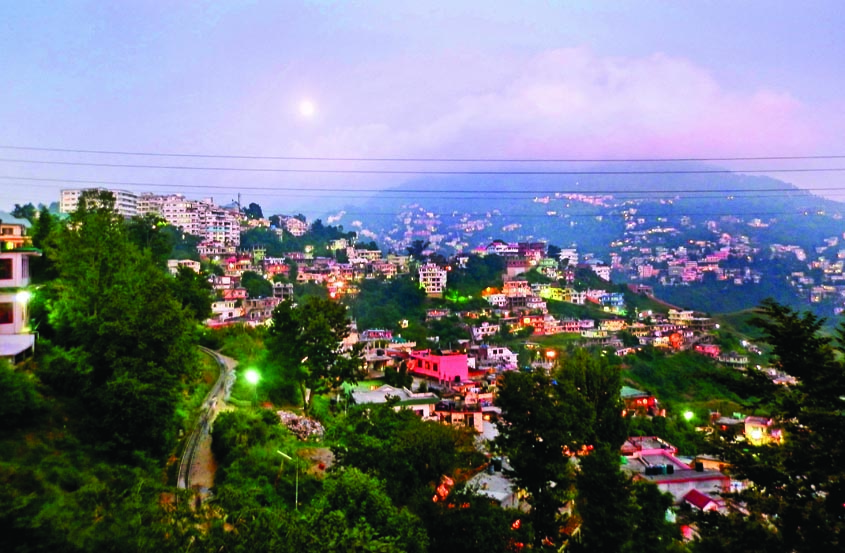Apart from the geo-economic significance of this little hamlet, the British were enamoured of its beauty and pristine environment. It was built by the British as a sanatorium for patients ailing with tuberculosis. The fresh, clean, pine-scented air was seen as a ready remedy for tuberculosis patients overlooking a valley. In 1947, the British were sent packing home and Indians could finally breathe lungfuls of fresh Himalayan air. After all, they were free!
The Andaman Islands may house the most notorious cellular jail in India but there is a second lesser-known cellular jail in North India. 60km from Chandigarh, the deadly Dagshai cellular jail is situated in the little-known and hardly visited military town of Dagshai.
The building and adjoining areas were used as a storage space yard until it was recognised. After it was cleaned up with the help of the Army, a well-designed and strappingly built structure emerged. It needed little or no repairs and the spruced-up structure has now been converted into a museum.
The Dagshai jail was constructed in the year 1849 at a cost of Rs 72,873. It has 54 maximum security cells. These cells are 8’x12’ with 20-foot high ceilings and profoundly barricaded windows and doors.
Of the 54 cells, 16 were meant for solitary imprisonment. These cells had absolutely no ventilation and abysmal access to natural sunlight. These were for prisoners guilty of treachery, who were subjected to cruel chastisement.
There was one particular cell for those who were to be meted out unusually ruthless castigation for daring the British Empire. The foremost criminals of the jail came in 1857. These were the brave and mighty Gorkha soldiers of the Nasiri Regiment who had vociferously revolted against the nasty British during the mutiny of 1857. They were caged in the Dagshai jail.
And then in 1914, a prosperous Sikh, Baba Gurdit Singh from the island of Singapore, chartered a Japanese ship, Komagatamaru, to ferry 350 Sikhs to Canada. They were all ex-Armymen seeking re-settlement in British-ruled Canada. They were denied disembarkation. The ship had to return to Calcutta where 20 identified masterminds were detained on arrival and were sent back to the lethal Dagshai jail. Four of them were hanged. It is also believed that Mahatama Gandhi also spent a night at the jail to offer his solidarity for the Irish Catholic soldiers.
Apart from the jail, there are around 20 luxurious British-Era villas spread around the cantonment. One of the most iconic properties is called Petlands, on the Charring Cross owned by Lady Gurbachan Kaur. This property has an interesting story to tell. When Partition of India took place, it was followed by horrendous barbarism and an ugly mix of looting, rape, murder and rioting. The aristocratic Mann family, erstwhile Chiefs of Panjab, were spending the summer of 1947 at the high end, luxurious Savoy hotel in the Mussoorie range. Caught unawares on the wrong side of the newly-drawn Radcliffe line, they found themselves in what was now called India. Everything was left on the other side of the border. The only property they owned in India was in Dagshai. That too was technically owned by his better half, Lady Gurbachan Kaur. It was a grand, British-era bungalow, Petlands 15-A, Charring Cross. Born in an aristocratic family she was the only child of the legendary Bishen Singh Singhpuria, a philanthropist, human-rights activist and educationist . Petlands was just one of the uber luxury properties she had inherited from her father. This was bought from Mrs. Cocks, a woman of English origin, who sold it off for Rs 20,000 in the 1920s before she set off for Australia where her son lived. An immediate thought that crosses my mind after visiting this beautiful villa is that it would look perfect pictured on an English butter cookie and biscuit tin.
Very old churches flash old wooden crosses, weathervanes and assorted biblical memorabilia. There’s also a graveyard with graves that date back to the early 1800s. The aura is spooky and mendacious. I scurry along.
As I sit down, one last time with my cuppa tea, reminiscing my time spent in the beautiful cantonment, I can’t help but feel pangs of nostalgia

